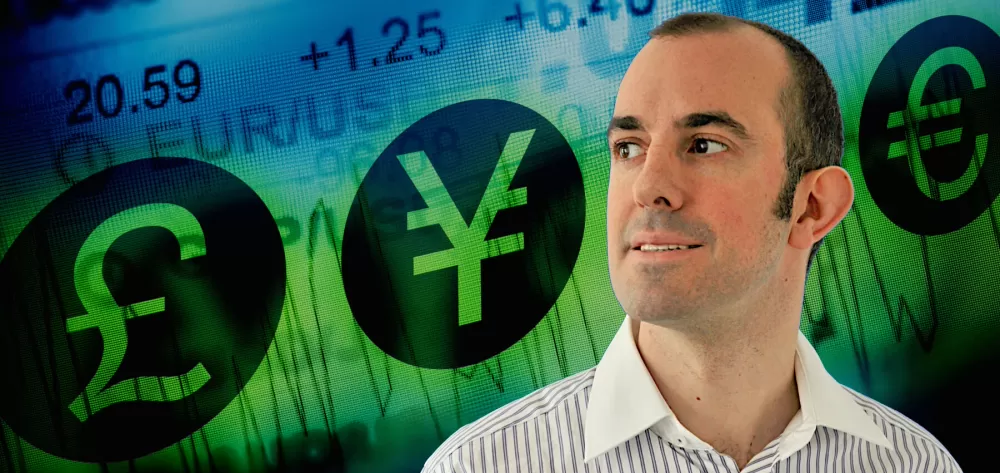As a Swiss hobby investor who invests in non-Swiss stocks, bonds, ETFs, and other assets, the strong Swiss franc is a mixed blessing. For someone who earns and spends in Swiss francs, losses in the value of foreign currencies directly detract from my returns from investments denominated in those currencies.
To find out just how big an impact the strong franc has on performance, I looked at historical mid-market rates for the past 20 years (February 28, 2004 to February 28, 2024) as per XE.com.
Out of sheer curiosity, I included the performance of various stock indexes calculated based on each currency. I calculated the historical performance using data from Investing.com and Yahoo Finance.
Bear in mind that in addition to the currency exchange losses, I would also have had variable costs like currency exchange markups, brokerage fees, custody fees, and fund TERs to contend with. Those costs depend on which stock broker you use, and whether or not you invest in funds (ETFs, for example). I did not account for those variable investment costs, and the resulting counter-performance, in my calculations.
1. Singapore dollar investments – 12.68 percent currency loss
The Singapore dollar has historically been among the world’s strongest currencies. But in spite of that, my investments would have had to yield a minimum total return of 12.68 percent on my original Swiss franc capital to beat holding Swiss francs in cash.
Over the same 20 years, the FTSE Straits Times Singapore (STI) index grew by around 66 percent.
2. Chinese yuan investments – 20.65 percent currency loss
The yuan fared somewhat better than many other major currencies. Still, I would have needed a currency-adjusted return higher than 20.65 percent over the investment term to beat keeping a wad in Swiss francs in a safe.
The performance of China’s main stock index, the SSE Composite index, during the 20-year period was around 75 percent.
3. US dollar investments – 31 percent currency loss
The price of a Swiss franc was 0.79 US dollars in 2004, and 1.14 dollars in 2024. If I had invested in dollar-denominated assets 20 years ago, I would have had to pay around 31 percent more dollars to get back the same amount of francs today. In other words, I would have had to earn a minimum final return of 31 percent in Swiss francs on that investment just to break even, compared to keeping Swiss francs in cash.
For the sake of comparison, the Nasdaq 100 grew by around 1106.52 percent over the same period.
4. Canadian dollar investments – 31.87 percent currency loss
Each Canadian dollar purchased at the 2004 rate of 0.95 Swiss francs per dollar would convert back into a much lower 0.65 Swiss francs in 2024. If my investments denominated by Canadian dollars did not bring me more than 31.87 percent in returns after converting the money back into Swiss francs, I would have been better off leaving my francs in a zero-interest Swiss bank account.
For reference, the S&P TSX index gained 140.22 percent in that 20-year term.
5. Euro investments – 39.76 percent currency loss
Each euro I purchased back in 2004 for 1.58 francs a piece would today fetch me just 0.95 Swiss francs. For my euro investments to be more profitable than holding Swiss francs in cash, they would have had to deliver a return above 39.76 percent by the end of the term.
The DAX Performance Index﹘an important stock index in the Eurozone﹘grew by 333 percent in the same period.
6. Australian dollar investments – 41.86 percent currency loss
Australia may have attractive stocks in the commodities sector, but it does not have a particularly strong currency. Each Aussie purchased at the 2004 rate of 0.98 Swiss francs would today bring me just 0.57 Swiss francs. My Australian investments would have had to return a minimum of 41.86 percent in Swiss francs on my original capital just to break even.
For reference, the S&P ASX 200 index grew by a modest 126.55 percent over the past 20 years.
7. Japanese yen investments – 50.09 percent currency loss
At 2004 mid-market rates, a Swiss franc would get you 85.59 yen. Fast-forward to 2024, and those 85.59 yen would only get you around 0.50 Swiss francs﹘half as much. In other words, half of my investment returns would be erased by the devaluation of the yen. My Japanese investments would only be profitable if the final return, after changing the money back into francs, exceeded 50.09 percent at the end of the 20-year term.
The performance of the Nikkei 225 for the same period is around 247.86 percent.
8. Swedish krona investments – 50.51 percent currency loss
The Swedish krona has had a hard run of it in the past two decades. 1000 francs invested in Sweden at the 2004 rate of 5.82 kronor to the franc would have dwindled to around 495 francs by early 2024. The minimum currency-adjusted return needed to break even would be 50.51 percent.
The OMX Stockholm 30 index gained 247.38 percent between 2004 and 2024.
9. British pound investments – 52.73 percent currency loss
There was a time when the pound sterling could do no wrong, but those days are long past. Had I invested in pound-denominated stocks, funds, or bonds in 2004, more than half of my money would have been devoured by the strong Swiss franc by 2024. My investments would have had to yield a return above 52.73 percent, after converting them back into Swiss francs, to have made any sense at all.
The performance of the FTSE 100 over the same 20 years was around 68.95 percent.
10. Norwegian krone investments – 54.10 percent currency loss
Had I converted Swiss francs to invest in stocks and bonds denominated by the Norwegian krone, I would only have made money if the currency-adjusted returns by the end of the term exceeded 54.10 percent.
But while the kroner’s value has suffered, the Oslo OBX index gained 591.85 percent in the past 20 years.
11. Brazilian real investments – 59.10 percent currency loss
Brazil is one of South America’s biggest economies. But that would not have spared my Brazilian investments from the wrath of the Swiss franc. At the time of investing in 2004, I would have paid 1 franc for 2.31 reals. Today, I would change my reals back into francs at the rate of 5.64 reals per franc. In other words, the value of my real investments would have slightly more than halved just on account of currency devaluation. If I had not achieved a total return in Swiss francs surpassing 59.10 percent, my investment would be pointless.
The Ibovespa Brasil Sao Paulo Stock Exchange Index gained 478.49 percent between 2004 and 2024.
12. South African rand investments – 76.20 percent currency loss
If I want to invest in African companies through a Swiss bank, my options are generally limited to South African stocks denominated by the rand. When I lived in South Africa back in 2004, I would get a tidy 5.22 rand per Swiss franc. But times have changed. Every 1000 francs changed into rands in 2004 would today be worth just 237.87 francs. If my rand-denominated investments had not achieved a final return higher than 76.20 percent in Swiss francs, I would have been better off keeping my Swiss francs under my mattress.
The FTSE JSE All Share, South Africa’s main stock index, gained 554.28 percent in the last 20 years.
Currency risk works both ways
Devaluations of foreign currencies against the Swiss franc would have added an investment cost for you as a Swiss investor, historically speaking. But the exact opposite holds true for people who earn and spend in foreign currencies, but have invested in vehicles denominated by the Swiss franc.
Example: A German investor who invested in Swiss-franc-denominated medium-term notes, for example, would have earned an additional currency-adjusted return of 39.76 percent in euros at the end of the 20-year term just from the appreciation of the franc against the euro.
However, it is important to understand that past performance is never a guarantee of future performance. A devaluation of the Swiss franc in the future cannot be ruled out.
Disclaimer: The author is not a financial advisor. The accuracy of information in this blog post is not guaranteed and should not be considered investment advice.
More on this topic:
Calculator: Investments denominated in foreign currencies
Investment Returns in 2023: Nasdaq Dwarfs Swiss Stocks
Blog: How much money could you make with Swiss stocks?
How much money could you lose with Swiss stocks?






